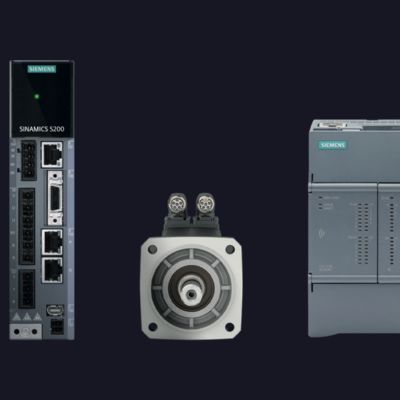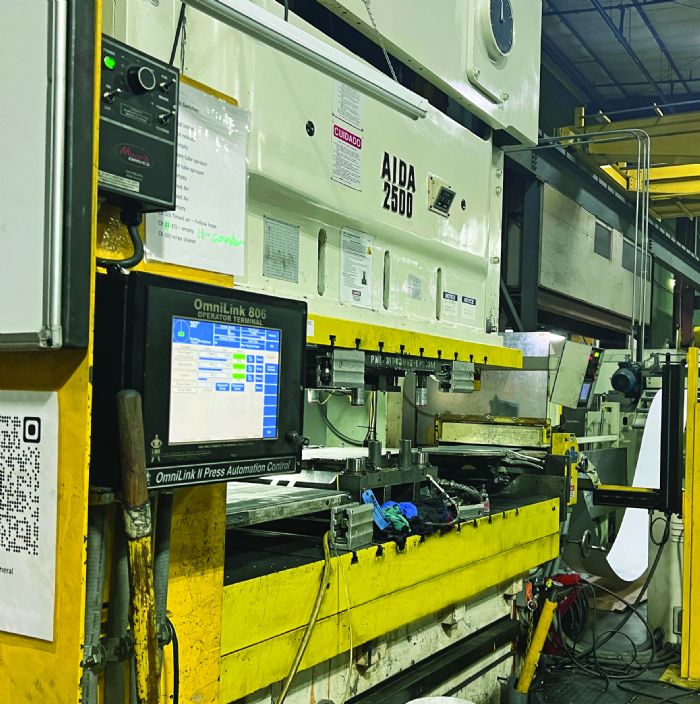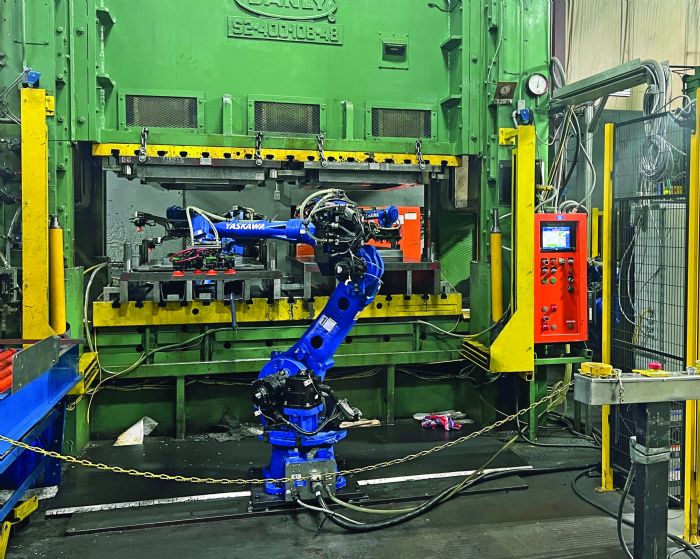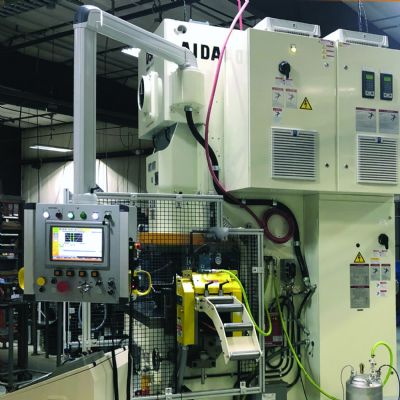“The fault log will show many days’ worth of records on every reason a press has stopped,” he shares. “It records the reason for the stop, the job that was running, the press speed and even the exact degree at which the fault was initiated. This has eliminated the need for countless hours of troubleshooting of intermittent faults for things such as an airline flexing into a light-curtain sensing field, or a pressure switch with an intermittent fault in the contacts. Our tech walks up and scrolls back to the day and time of the fault, and immediately can narrow the issue down to one input. He then quickly can determine why that input initiated a stop—did the pressure drop, is the pressure switch failing or is there a loose wire at the switch, for example.”
Sensors and Die Protection
PMI continually invests in die-sensing technology, even installing sensors on customer tools to ensure high uptime and part quality. “The Link controls have met every sensor need we have had and, frankly, they have yet-untapped capabilities ready and waiting for us when it’s appropriate, to support a client’s needs,” Larson says.
The AMC and APC controls can run any combination of NPN or PNP sensors, N.O. or N.C. configurations, and have extensive diagnostic histories. PLSs all can have time off, input drive, toggle logic and speed advance, among other functions. Tonnage monitors provide signal analysis and the ability to automatically turn off low alarms during coil thread-up. In addition, the APC has analog-sensor capabilities, a powerful part-tracking system and even a large shift register to allow the press control to replace a PLC to power more automated dies using in-die inspection and gag tools.
Larson also notes how much team members appreciate easy setup features. “While the press controls offer a lot of high-end capabilities,” he says, “the die protection and PLS are easy to set up due to the graphical touchscreen interface displaying the stroke, timing windows and, for die protection, even the transitions of the sensors, right on the screen. Our operators and setup team can visualize their settings and receive immediate feedback showing them what is happening, which eases programming.”
Automation Integration
One capability of the press controls not initially used at PMI: advanced interface capabilities to support the addition of automation to the presses. “When we upgraded our first presses with the Link controls, we did not have automation on the presses,” says plant manager Eric Lewis. “When we did add our first robots to the presses, the first outside integrator we used was impressed by the fact that the control already had built-in capability specifically prepared to handle automation. As we have continued to automate our presses, this control capability has reduced the needed investment and time commonly required to retrofit automation to existing presses.”
Lewis also points out the intuitive, modern user interface. “This generation of operators immediately feels comfortable with the touchscreen-based interface,” he says. “The flow of the control just makes sense, and it is amazing to see how quickly operators dance through the screens, after growing up using smart phones and computers. The layout and thought process seems very natural, and even when switching from the smaller MPC to the larger APC we see a consistency of logic and layout that makes transitioning easy. We can move operators to various presses and they immediately become comfortable and productive.”
Lewis also appreciates the high level of support behind the press-control upgrades, including some made several years ago. “Everything fails eventually,” he says, “so we were looking for controls that not only would be reliable but also well-supported, and it’s been beneficial that Link makes its own components and has a decades-long replacement policy. Over the tens of thousands of hours and countless millions of strokes since these controls were first installed on our presses, the amount of unplanned downtime has been negligible.”
Outside Service Support Supplements Inhouse Electricians
While PMI has great electricians on staff, Lewis shares, they’re kept busy handling the day-to-day needs of the firm’s large and ever-growing plant. That led him and his team to seek a local dealer that could handle the installation work required to enable timely implementation of the new controls as they arrived. Up to the task: TCR Integrated Stamping Systems, Wisconsin Rapids, WI, the local Link representative.
From the author’s perspective:
Installation of the Link controls at PMI was aided by the fully detailed documentation provided by Link. The controls arrive configured for each press, and the press-specific prints provide clear and accurate records for each machine, not the typical generic prints. We also appreciate that Link manufactures its own boards and even programs its chips inhouse and can maintain part availability for many decades. A mechanical press can run for many more decades than most machine tools, and Link has no “planned obsolescence” and almost no reliance on outside vendors to produce critical components. MF
View Glossary of Metalforming Terms
See also: Link Systems, TCR-Integrated Stamping Systems, Aida-America Corp.
Technologies: Pressroom Automation
Comments
Must be logged in to post a comment. Sign in or Create an Account
There are no comments posted.Wintriss Expands Tennessee Sales and Service Representation ...
September 26, 2024
 Pressroom Automation
Pressroom AutomationNext-Generation Motion-Control System for Basic Automation A...
Friday, June 27, 2025
 Pressroom Automation
Pressroom AutomationYaskawa America Announces Expansion and Relocation of North ...
Thursday, June 19, 2025







 PMI began as a small company of six employees and today has grown to count more than 150 team members with 135,000 sq. ft. of manufacturing space, and that growth shows no sign of stopping. In 2022 the firm processed more than 76 million lb. of steel and aluminum.
PMI began as a small company of six employees and today has grown to count more than 150 team members with 135,000 sq. ft. of manufacturing space, and that growth shows no sign of stopping. In 2022 the firm processed more than 76 million lb. of steel and aluminum. “As far as capabilities go, Link offers multiple options,” Larson continues, “including its smaller MPC control, well-suited to our simpler press operations that use fewer sensors and PLSs than some of our other presses. The larger APC controls from Link, used on our more complex press cells, essentially offer unlimited channels of die protection and PLSs, and signature-analysis tonnage monitoring, and the controls came with more very advanced features.”
“As far as capabilities go, Link offers multiple options,” Larson continues, “including its smaller MPC control, well-suited to our simpler press operations that use fewer sensors and PLSs than some of our other presses. The larger APC controls from Link, used on our more complex press cells, essentially offer unlimited channels of die protection and PLSs, and signature-analysis tonnage monitoring, and the controls came with more very advanced features.” 